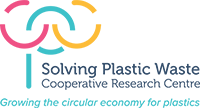- Pollution created by single-use plastic items like straws and shopping bags is a growing threat to our ecosystems and economies.
- A system based on reuse would not only reduce humanity’s ecological footprint, but also create lucrative new sources of economic value.
- Government agencies, multinational bodies, and non-governmental organizations (NGOs) have already begun outlining scenarios for reuse.
The amount of waste generated by humanity represents a growing threat to our ecosystems and economies. The output of solid waste has grown from 25 gigatons (yes, that’s 25 billion tons) in 1990 to 86 gigatons in 2020 – and a projected 140 gigatons by 2050.
This expansion exceeds population growth, and is the result of a disposable-goods system that combines short-term use and long-term environmental harm. Half of all plastic production is for single-use items. To get a sense of how ephemeral a “single use” can be, consider that the average working life of a disposable plastic shopping bag is just 15 minutes.
The Future of Reusable Consumption Models insight report, published by The World Economic Forum’s Future of Consumption Platform in collaboration with Kearney, highlights innovative solutions. It finds that the key will be to move from a “linear” waste economy – in which a product’s existence follows a one-way line from manufacture to usage to the landfill – to a “circular” economy in which items are reused or recycled indefinitely. The report shows that reuse models are not only viable, but also capable of generating added value across the economy.
